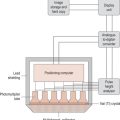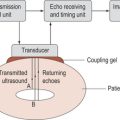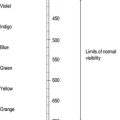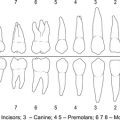J
Jacksonian epilepsy (focal epilepsy) an epileptic attack caused by a brain tumour, encephalitis or a head injury, symptoms include limb twitching.
jargon technical or specialized language that is understood only by a particular group, for example health professionals. Often used to describe the use of obscure and pretentious language, together with a roundabout way of expression.
Jarman index system for weighting general practice populations according to social conditions. A composite index of social factors that general practitioners considered important in increasing workload and pressure on services. These factors were identified through a survey of one in ten general practitioners in the UK in 1981. An underprivileged area (UPA) score was then constructed based on the level of each variable in each area, weighted by the weighting assigned from the national general practitioner survey. Eight variables were used: (a) elderly living alone, (b) children aged under five years, (c) unskilled, (d) unemployed (as % economically active), (e) lone-parent families, (f) overcrowded accommodation (>1 person/room), (g) mobility (moved house within 1 year), (h) ethnic origin (new Commonwealth and Pakistan). Information on the variables were derived from the census.
jaundice a condition characterized by a raised bilirubin level in the blood (hyperbilirubinaemia). Minor degrees are only detectable using tests. Major degrees are visible in the yellow discoloration of skin, sclerae and mucosae. Jaundice without the excretion of bilirubin in the urine is termed acholuric. Jaundice may be classified as follows: (a) haemolytic or prehepatic jaundice where excessive breakdown of erythrocytes releases bilirubin into the blood, such as in haemolytic anaemia. See also haemolysis, haemolytic disease of the newborn. (b) hepatocellular jaundice arises when liver cell function is impaired, such as with hepatitis or cirrhosis. (c) obstructive or cholestatic jaundice where the flow of bile is obstructed either within the liver (intrahepatic) or in the larger ducts of the biliary tract (extrahepatic). Causes include: cirrhosis, tumours, parasites and gallstones. See also cholestasis.
java a programming language that works on all computer systems.
jaw-bone describes either the upper jaw (maxilla) or lower jaw (mandible).
jejunum that part of the small intestine between the duodenum and the ileum.
jig a device for immobilizing patients during radiotherapy treatment.
joint the articulation of two or more bones (arthrosis). There are three main classes: (a) fibrous (synarthroses), e.g. the sutures of the skull; (b) cartilaginous (amphiarthroses), e.g. between the manubrium and the body of the sternum; and (c) synovial or freely movable (diarthroses), e.g. shoulder or hip. See also Charcot’s joint.
joint cavity the space between the articular surfaces of bones. In the most common, synovial cavity, the ends of the bone are covered with articular hyaline cartilage and synovial fluid fills the space.
joule (J) the SI unit for measuring energy, work and quantity of heat. The unit (J) is the energy used when 1kg (kilogram) is moved 1m (metre) in the direction of the force of 1N (newton). The kilojoule (kJ = 103J) and the megajoule (MJ = 106 J) are used by nutritionists for measuring large amounts of energy.
JPEG (Joint Picture Experts Group) a compressed, computer graphics file used to store images on a computer.
jugular pertaining to the throat. jugular veins two veins passing down either side of the neck.
jukebox an electromechanical device for handling large numbers of optical computer disks to enable the rapid retrieval of archived data.
juvenile chronic arthritis (JCA) now more commonly termed juvenile idiopathic arthritis.
juvenile idiopathic arthritis (juvenile chronic arthritis) chronic inflammatory arthritis in children (previously termed Still’s disease) features such as fever, rash and anaemia may be early signs of the disease.
juvenile osteochondritis a condition of the epiphyses or centres of ossification. It may be due to a poor blood supply causing the ‘death of bone’.
juxtaglomerular close to the glomerulus. juxtaglomerular apparatus (JGA) cells in the distal tubule and the afferent arteriole of the nephron. They monitor changes in pressure and sodium levels in the blood, and initiate the release of renin. See also macula densa.






